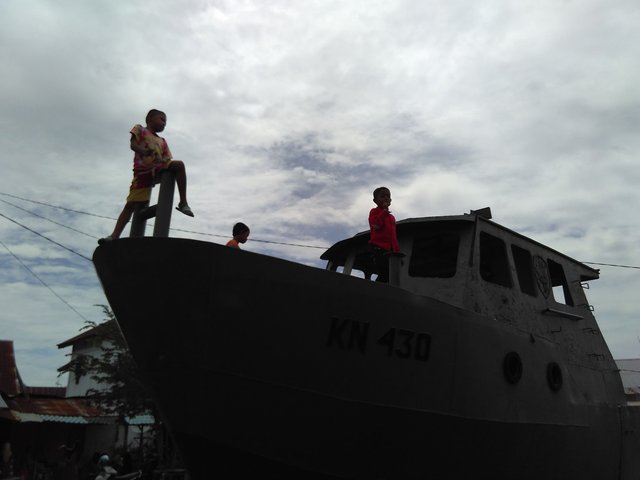I am interested in research conducted by Syiah Kuala University with The Georgia Institute of Technology USA, related to the existence of caves that record evidence of ancient tsunamis in Aceh. The study, which was centered in Ek Luntie cave, Aceh Besar, Aceh, brought Prof. Hermann M. Fritz of The Georgia Institute of Technology USA. In his research with Nazli Ismail, PhD, from Unsyiah, it is known that there are traces of ancient tsunamis in this cave.
The Ek Leuntie cave, which sits on the shoreline, stored evidence of the tsunami over 7,400 years ago. The researchers then recommend this cave to be preserved and should be used as a natural museum.
Previously, I and Tim The Atjeh had written about the existence of a cave that recorded evidence of this ancient tsunami. At that time, I was with Reza Mustafa (@bookrak), and some other friends knew there was evidence of an ancient tsunami in this cave as well as the results of an interview with Nazli Ismail.
In his testimony to us at the time, Nazli said, the results showed Aceh was once hit by megathrust tsunami period. As I recall, the tsunami occurred in the period 1200 AD, 1400 AD, 1500 AD, 1900 AD, and last on 26 December 2004 AD.
We then reconcile Aceh's historical records relating to this natural disaster. From the results of these studies, it is known that there is a link between research conducted Nazli with manuscript evidence in Aceh.
Note about this tsunami can be seen from the writings of HM Zainuddin, in his book Tarich Aceh. This author mentions several reasons why Ulee Kareng, Banda Aceh, is so named. According to research HM Zainuddin known, Ulee Kareng in the rules of the language means Ulee is the head. While Kareng in question means Kareung or coral.
Then why is the area that is now far from the coast called the head of the coral? This, according to HM Zainuddin, caused the former area of Ulee Kareng is coastal. Not downtown as it is today.
HM Zainuddin research results are then evidenced by the discovery of wooden boat debris in the region. The former ship was only discovered in the mid-1970s by locals who wanted to open a brick factory.
Furthermore, the evidence of Acehnese have known the tsunami is proven by local saga, such as the story of Indra Budiman. A History Lecturer at Syiah Kuala University, Teuku Abdullah Sakti, confirmed that. The man who focuses on this saga acknowledges the mention of Ie Beuna, which is reported as a large wave of rising seawater, written in a saga. In the description of the saga, said Teuku Abdullah Sakti, the big waves were exactly like the tsunami that occurred in Aceh in 2004.
Acehnese have also been familiar with the tsunami disaster through the local wisdom of Smong. Smong is a sleeping songs Simeulue citizens who often sung while lull their children. In Smong, as I recall, it is also said that a large earthquake (Linon) is often followed by a tsunami (Smong: Simeulue language for tsunami). Therefore, in the sleeping singing of Simeulue residents mentioned that if a large earthquake followed by the shrinking coastline, it will happen Smong. This is what makes the number of residents Simeulue, Aceh, minimal when the tsunami disaster in 2004 occurred.

Image source: @boynashruddin
Why am I interested?
I am interested in tsunami research, because it is a victim of the tsunami disaster on 26 December 2004. The body of my mother and sister until now has never been found. Many of my siblings were also lost when a large wave of sea water swept through the city of Banda Aceh, in the disaster that occurred 13 years ago.
As a coastal resident, and with evidence of an ancient tsunami in Aceh, I hope that what I experience is not felt by future generations. Because at that time, we never knew that when a large earthquake shook the earth, it would have the potential for a tsunami.
@boynashruddin got you a $1.55 @minnowbooster upgoat, nice! (Image: pixabay.com)
Want a boost? Click here to read more!
Downvoting a post can decrease pending rewards and make it less visible. Common reasons:
Submit
I am interested in your writing style of the history
Downvoting a post can decrease pending rewards and make it less visible. Common reasons:
Submit